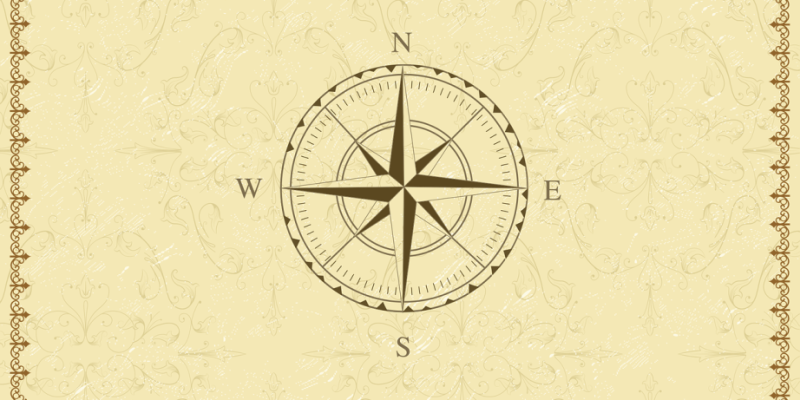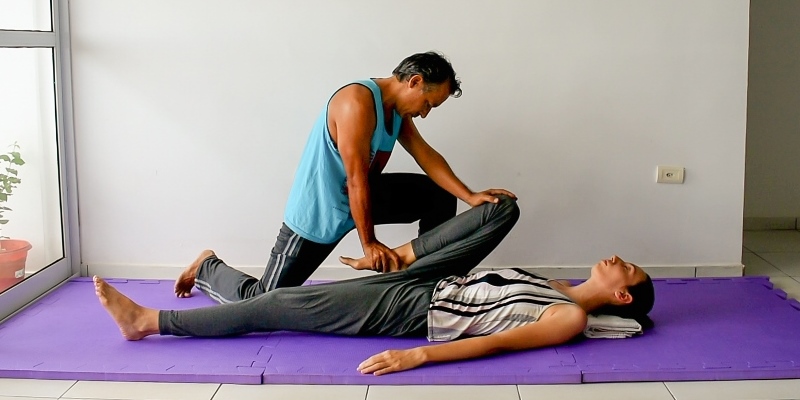
There are quite some distinct styles of doing Thai Massage in Thailand, each with its own special characteristics, and in this post we’re going to take a look at what is called Royal Thai Massage. In Thailand, this style of massage is also called Royal Massage, Royal Style, Court Style, Rajasamnak Style, or Nuad Rajchasumnak.
Introduction
To better understand the Thai Royal Massage Style we need to contrast it to the so-called Rural Style or Chalosiak Thai Massage Style, also called the Folk, Common or Commoner Style (Nuad Chaloeyseuk).

Now, the Rural Style is rather “liberal” in its way of application, and the Thai Massage therapist may use thumbs, palms, arms, knees, feet, elbows, in fact any part of the body that can be useful giving pressure or acupressure. It’s a rather intimate way of doing massage and the practitioner often works very close to the body of the receiver and Yoga-like stretches and lifts are an integral part of the treatment. The Rural style is mostly associated with Northern Style Thai Massage i.e. Chiang Mai or Lanna style.
Back to Royal Style. This kind of Thai Massage was — and still is — practiced at the Thai Royal courts, for the aristocracy, the ruling class, VIPs, or for highly placed officials. It’s a style where the practitioner would strictly adhere to certain rules of non-intimacy, respect, politeness, and treatment protocols, and it’s often associated with Southern Style Thai Massage i.e. Bangkok Style, which, by the way, is considered therapeutic and rather fast-paced and intense.
The Royal Treatment
Royal Thai Massage in fact almost only uses acupressure and the hands i.e. thumbs or palms to give the treatment, which is primarily based on directly pressing on the Sib Sen — the ten Thai Sen Energy lines — and specific acupressure points. It’s why today, the Royal Style in Thailand, has almost become synonymous with giving Therapeutic Thai Massage (reflected by the official Thai Traditional Massage study curricula of 372 hours and 800 hours), and subsequently there are various treatment protocols or acupressure protocols to be applied to heal or treat individual ailments or illnesses.

In the traditional way of “executing” Royal Style Thai Massage, therapists would enter the treatment room crawling on their knees, the face bent down and not looking at the receiver who is already lying on the mat. Before starting the treatment the therapist pays respects, asks permission of the patient to do the massage, and checks the pulse rate by putting fingers over the receiver’s arteries of the wrist and verifies pressure of the body’s Wind (which could relate to Lom, Lom Pran, Wata, or the Vayo Wind Element). Perhaps needless to say that both receiver and therapist are fully clothed.
As for the techniques applied, the therapist would always stay on the knees during the session, keeping an arm length distance being always positioned sideways to the receiver (about 35cm to 50cm), never crosses the body of the receiver or breathe on them (which is considered extremely impolite), and exclusively uses thumbs, fingers, and palms to press on acupressure points. Joint mobilization or manipulations are not carried out and the arms should be always kept straight when applying pressure. Stretches done on the patient are out of the question because such is also considered impolite.
Additionally, there are rules for how much pressure should be given (divided up in various classes ) and rules for the duration of pressure (short or long, which is associated with the breath of the therapist).
The receiver will only get the massage in the seated position, or lying face upwards or lying on the side, but never lying with the face downwards. Generally, the entire body is treated, or partly, depending on the applied treatment i.e. acupressure protocol.
Final Thoughts
Unless you are royalty, or maybe an ambassador, or other VIP, it’ll be unlikely you could get the full, authentic Royal Style treatment in Thailand. Nevertheless, you can certainly receive a massage that complies with the treatment protocols taught in the Royal Style. For that, you will most likely best succeed in Thai Traditional hospitals or clinics, not in the typical Thai spa, parlor or salon.
In contrast, training courses in Thailand that cover the Royal Thai Massage style are easily accessible and available across the country. Some of these courses will span the already mentioned 372-hours or 800-hours study curricula, but there are also trainings of just one or two weeks that focus rather on the typical way of giving a Royal Style Massage and teach you a simple full body treatment routine. In the latter kinds of training courses, in-depth therapy protocols and procedures that cover treatments for a broad range of discomforts or illnesses are necessarily not taught.
















